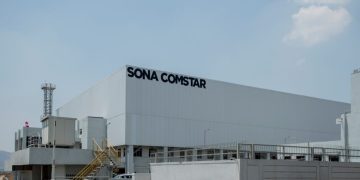Accidental repair of a vehicle, with minor or moderate damage due to collision, can be repaired to make a vehicle perform as well as it was before the collision. So, just because a vehicle has been in an accident doesn’t mean it won’t last or function, as safe as a new car. However, it’s important that accident vehicles be fixed by an expert body shop that follows manufacturer specifications for the repairs.
If a car is not repaired properly, even in the case of a relatively minor damage, the safety of the vehicle is compromised.
Some accident repair job include:
• Perform structural repair on vehicles
• Fuse metal components
• Improve structural design and integrity
• Interpret factory diagrams
• Comply with safety regulations
New Trends & Material in Car Design
i: Unibody design
Established and well-known technique
Existing industrial structure
Expensive tooling cost
High number of body components
Complex design, inherently costly to re-design
ii: Frame/Chassis design
Low/moderate tooling cost
Reduced number of parts
Simplified design, increased flexibility
Lack of design experience
Extensive bodyshop costs
Why new materials are being used in car manufacturing?
• Reduction of fuel consumption with 25%
• Reducing the car weight
• Take into account the environmental impact
• No compromise on safety, comfort or
performance
Use of High Strength Steels
Joining Technologies
The safety body is constructed so that the passenger compartment is reinforced at all vital joints, where damage occurs most frequently (60% at the front, and 15% at the rear), so-called deformation zones. These are built so that they will deform according to a predetermined pattern, with pre-pressed indentations known as concertina zones on the frame side members.
This type of construction is associated with increased material damage, means that damage in vital areas, such as the anchorage points for the steering and front sub-frame, is more difficult to locate. That is why it is important for the repairer not only to be familiar with the construction of the body, but also to have access to “high-class equipment “.
Job Planning
• How was the car hit?
• Which angle?
• Is the damage local?
• Are there other areas effected?
• What will be straightened?
• What will be replaced?
Repair Process
1. Estimate: The auto body shop will examine the damage to your vehicle to compile an initial estimate. This will give you an idea of the extent of the damage and the potential cost of repairs.
2. Insurance Approval: The auto body shop will submit the estimate to your insurance company. There may be some back and forth here, but you shouldn’t be too involved with this step.
3. Once the car repair shop has an approved estimate, you’ll bring your vehicle in for repairs.
4. Disassembly: The technicians will take apart your vehicle and create a blueprint of the repairs.
5. Order Parts: Once there’s a blueprint, replacement parts will be ordered. This involves coordination with the insurance company in order to get the best parts at the best price.
6. Repairs: This covers all structural and mechanical repairs. In most instances, this step can begin before the new parts arrive.
7. Painting: A new coat of paint helps restore vehicles back to their factory finish.
8. Reassembly: After all the pieces are freshly painted, the vehicle is fully reassembled.
9. Detailing: This step includes vacuuming, cleaning and final touches.
10. Final Inspection and Delivery: The quality control department inspects the vehicle. Upon their approval, your vehicle is ready to be picked up
Equipment Role in Repair of a Vehicle
To be prepared to perform any repair job the body shop needs:
• A well-planned workshop.
• Proper equipment.
• Well-functioning equipment.
• Correct technical information.
• Proper knowledge and a well-trained staff.
Alignment Machines (Measuring)
Car structural dimensions can be measured on a high-end wheel alignment system.
Structural Repair
Repairing a car involves joining many sheets. For this it is Important to have a good welding equipment.
Vehicle frames and fenders become bent or damaged in collisions. A technician may need to cut out the warped piece of metal and replace it with a new piece. He must use good welding equipment to attach the new piece of metal and repair the car’s frame or fender safely.
Exhaust systems can rust and develop holes due to age, moisture and constant use. Some
auto body technicians cut the exhaust pipe,
clamp the pieces, apply spot welding and complete the weld.
Welding is an integral process in joining of structures. Properly repaired structures may have equivalent static strength, ductility, fracture toughness and yield strength levels as the base structures. A good welding equipment ensures to retain these properties of the structure. Also, delays will not occur. Clean, strong welds are an important part of auto body work because they improve a vehicle’s appearance and reliability.
The most common welding methods for automotive jobs include resistance welding/spot welder, Metal inert gas (MIG) welding, plasma arc welding (PAW) and Dent pulling system.
Inverter Spotwelder
Spotwelding process involves applying pressure and heat to the weld area using shaped alloy copper electrodes which convey an electrical current through the weld pieces. The material melts, fusing the parts together at which point the current is turned off, pressure from the electrodes is maintained and the molten“nugget” solidifies to form the joint.
Advantages of Inverter Spot Welding
• Easy to join the metals
• Ability to weld 3+3+3mm thick materials.
• High welding speed.
• Automated.
• Similar and dissimilar metals are capable of being welded.
• High production rate.
• Environment-friendly process.
• No need for filler metal, flux, and shielding gases
• Does not require any high skilled labours or technicians.
Mig Welding
The basic principle is heat generation due to electric arc. This heat melts the consumable electrode and base plate metal and they make a strong joint
Advantages of Mig Welding
• Higher welding speeds.
• Greater deposition rates.
• Less post welding cleaning (e.g. no slag to chip off weld)
• Better weld pool visibility.
Paint Booth
Automotive paint booths, mostly known as spray booths, are pressure-controlled and closed environments that are used to paint vehicles from the smallest cars to the light trucks, widely used to apply paint and other coatings to parts and products. They are necessary for the safety of your employees, also as part of the manufacturing or finishing process.
Car structural dimensions can be re-measured on a high-end wheel alignment system.
Repair quality & accuracy can be confirmed by printing before & after repair reports.

















































